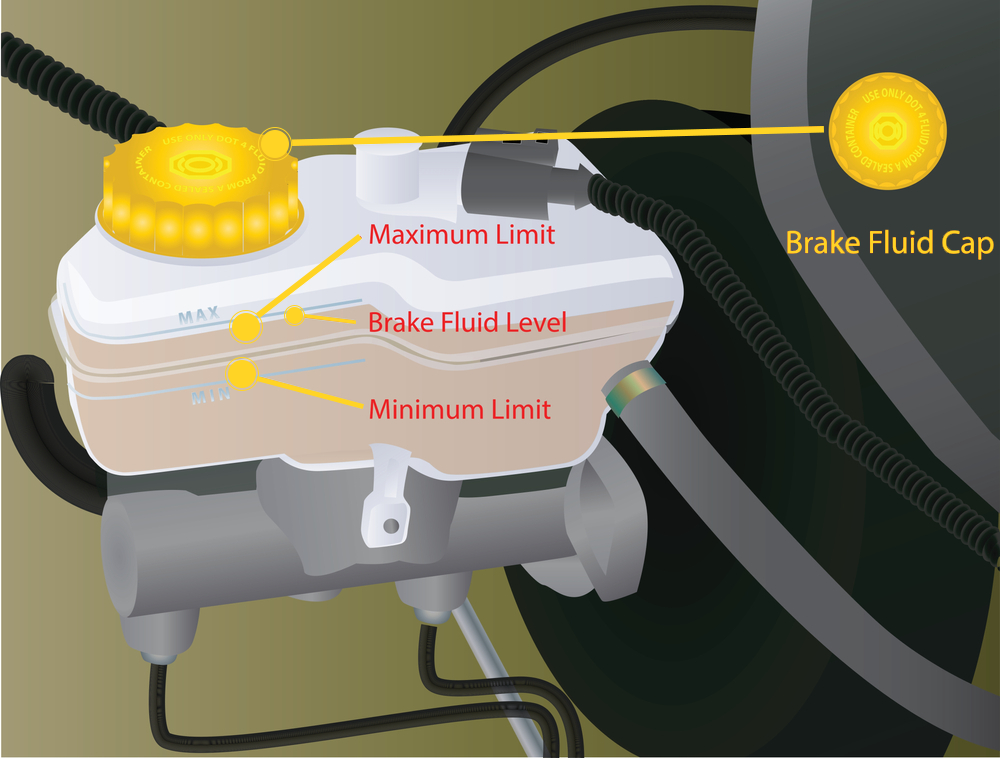This is a comprehensive guide on DOT 5.1 brake fluid.
In this guide, you will learn about everything you need to know abut DOT 5.1 brake fluid, which Include its properties, benefits, differences from other types of brake fluid, maintenance, and lots more.
What Is DOT 5.1 Brake Fluid?
DOT 5.1 brake fluid is a type of synthetic hydraulic fluid used in vehicles to make the brakes work effectively.
It is made from special chemicals called glycol ethers and polyglycol esters, which help it perform well in high temperatures.
One of the key features of DOT 5.1 is its high boiling point, which means it can handle intense braking without turning into gas.
This brake fluid is hygroscopic as it can absorb moisture from the air.
While this helps prevent corrosion in the braking system, it also means that the fluid needs to be changed regularly to maintain its effectiveness.
DOT 5.1 is often used in high-performance vehicles and anti-lock braking systems (ABS) because of its great performance and reliability.
Properties Of DOT 5.1 Brake Fluid
High Boiling Point
One of the most important properties of DOT 5.1 is its high boiling point, which is around 260°C (500°F).
This means the fluid can resist vaporization even when the brakes are used intensively, such as when driving down a long, steep hill or during heavy braking.
If the brake fluid boils, it becomes compressible, making the brakes feel “spongy” and reducing their effectiveness.
The high boiling point of DOT 5.1 helps maintain a firm, responsive brake pedal in all situations.
Hygroscopic Nature
DOT 5.1 brake fluid is hygroscopic, it can absorb moisture from the air.
Over time, the absorbed moisture can lower the boiling point of the fluid, reducing its effectiveness.
Mechanics recommend changing DOT 5.1 brake fluid every 1-2 years, depending on the vehicle’s usage and manufacturer recommendations.
Corrosion Resistance
DOT 5.1 brake fluid contains special additives that help protect the metal components of the braking system from rust and wear.
These additives form a protective layer on the surfaces of the brake calipers, wheel cylinders, and other metal parts, preventing corrosion and extending the system’s life.
Regular fluid changes help maintain the effectiveness of these additives.
Low Viscosity
At low temperatures, DOT 5.1 brake fluid has a low viscosity.
It flows easily through the small passages and valves in the braking system.
This ensures smooth, responsive braking even in cold weather.
As the fluid warms up during driving, its viscosity decreases further to improve its efficiency.
Compatibility
DOT 5.1 brake fluid is compatible with other glycol-based fluids, such as DOT 3 and DOT 4.
So, it can be used in a wide range of vehicles, from older models to the latest high-performance cars.
However, it is not compatible with silicone-based DOT 5 fluid, and the two should never be mixed.
Doing so can cause swelling and damage to the rubber components in the braking system.
Differences Between DOT 5.1 And Other Brake Fluid Types
| Brake Fluid Type | Composition | Dry Boiling Point | Wet Boiling Point | Hygroscopic | Corrosion Resistance | Compatibility |
| DOT 3 | Glycol-based | 205°C (401°F) | 140°C (284°F) | Yes | Moderate | Compatible with DOT 4, DOT 5.1 |
| DOT 4 | Glycol-based | 230°C (446°F) | 155°C (311°F) | Yes | Moderate | Compatible with DOT 3, DOT 5.1 |
| DOT 5 | Silicone-based | 260°C (500°F) | 180°C (356°F) | No | Good | Not compatible with DOT 3, DOT 4, DOT 5.1 |
| DOT 5.1 | Glycol-based | 260°C (500°F) | 180°C (356°F) | Yes | Excellent | Compatible with DOT 3, DOT 4 |
Maintenance And Replacement of DOT 5.1 Brake Fluid
Here’s how to take care of your brake fluid:
Regular Fluid Level Checks
First, it’s important to regularly check the brake fluid level in your vehicle.

You can find the brake fluid reservoir under the hood, usually near the back of the engine compartment.
Make sure the fluid is at the recommended level indicated on the reservoir.
If it’s low, add more DOT 5.1 brake fluid.
Avoid using other types of brake fluid, as mixing them can cause problems.
Inspection for Contamination
Next, inspect the brake fluid for any signs of contamination.
Over time, brake fluid can absorb moisture and become discolored or cloudy.
If you notice any dirt, debris, or a change in color, it’s time to replace the fluid.
Contaminated brake fluid can lower its boiling point and lead to brake failure.
Replacement Interval
Generally, it is recommended to replace DOT 5.1 brake fluid every 1 to 2 years, depending on your vehicle’s usage and the manufacturer’s guidelines.
Replacement Process
Here’s a step-by-step guide to replacing DOT 5.1 brake fluid:
- Gather Necessary Tools: You will need a brake fluid bleeding kit, a clean container for the old fluid, and a wrench to open the bleeder valves.
- Refer to Manufacturer Guidelines: Always check your vehicle’s manual for specific instructions on the brake fluid replacement process. Different vehicles may have different procedures.
- Bleed the Brake System: Start by bleeding the brakes to remove old fluid and air bubbles. Begin with the wheel farthest from the brake master cylinder (usually the passenger rear wheel) and work your way to the closest (driver front wheel). Open the bleeder valve and let the old fluid flow into the container until it runs clear. Close the valve before refilling with fresh DOT 5.1 fluid.
- Dispose of Old Fluid Properly: Used brake fluid is hazardous to the environment, so make sure to dispose of it at a recycling center or an auto parts store that accepts hazardous waste.
